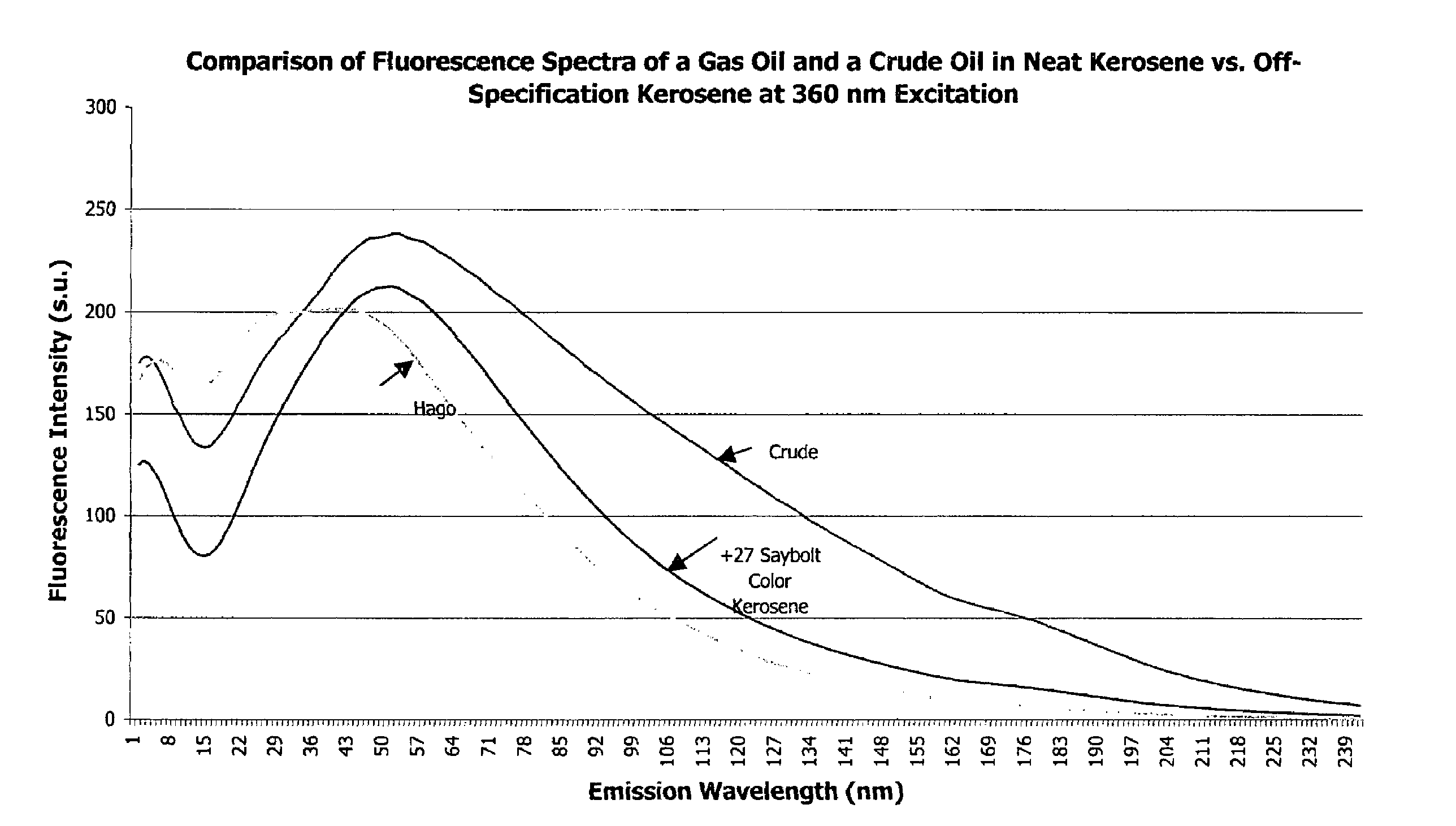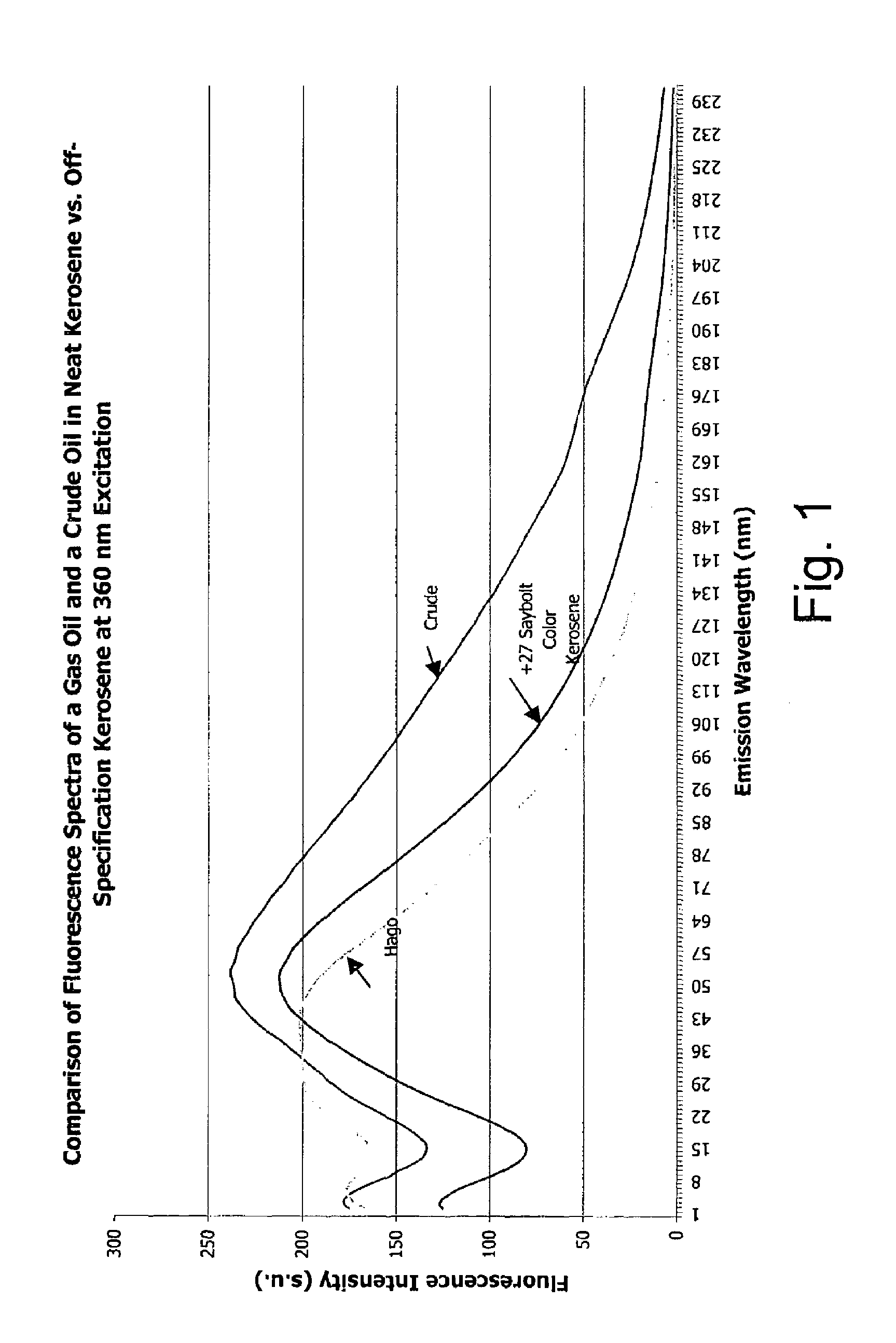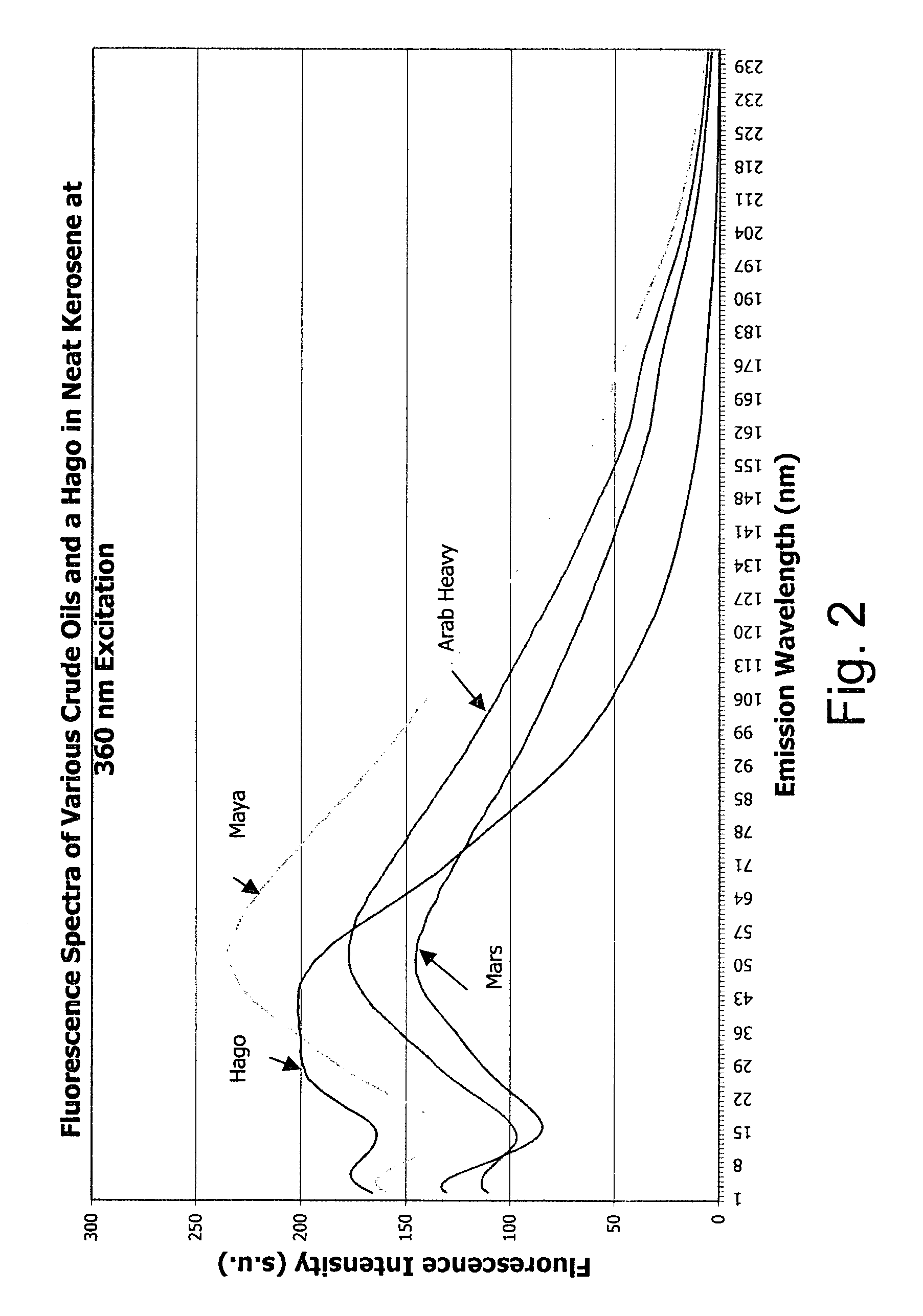Detection and classification of heavy hydrocarbon contamination in refinery process streams via spectrofluorometry
a technology of heavy hydrocarbon contamination and refinery process, which is applied in the direction of fluorescence/phosphorescence, instruments, material analysis, etc., can solve the problems of lack of specificity to determine the type of contaminant, lack of sensitivity to detect contaminants at low concentrations, and time-consuming and relatively expensive tests
- Summary
- Abstract
- Description
- Claims
- Application Information
AI Technical Summary
Benefits of technology
Problems solved by technology
Method used
Image
Examples
examples
[0055]Spectra of fluorescence intensity versus emission wavelength for various types of crude oils (Maya, Mars, Arab Heavy) and Hago (heavy atmospheric gas oil) in neat kerosene (kero) were obtained, as shown in FIG. 1
[0056]Spectra of fluorescence intensity versus emission wavelength for a gas oil and a crude oil in kerosene were obtained and compared to off-specification kerosene, as shown in FIG. 2
[0057]Accordingly, the invention, in another embodiment, relates to a process for determining the concentration and changes in concentrations over time of one or more heavy hydrocarbons in a specified sample using spectrofluorometry. The spectrofluorometric data from the sample is collected, transferred, and transformed into data corresponding to the chemical composition of the components of the sample and concentration of said components. The concentrations of one or more heavy hydrocarbons present are then determined by processing the data from the sample according to predetermined mod...
PUM
| Property | Measurement | Unit |
|---|---|---|
| wavelength range | aaaaa | aaaaa |
| Boiling Point | aaaaa | aaaaa |
| viscosity | aaaaa | aaaaa |
Abstract
Description
Claims
Application Information
 Login to View More
Login to View More - R&D
- Intellectual Property
- Life Sciences
- Materials
- Tech Scout
- Unparalleled Data Quality
- Higher Quality Content
- 60% Fewer Hallucinations
Browse by: Latest US Patents, China's latest patents, Technical Efficacy Thesaurus, Application Domain, Technology Topic, Popular Technical Reports.
© 2025 PatSnap. All rights reserved.Legal|Privacy policy|Modern Slavery Act Transparency Statement|Sitemap|About US| Contact US: help@patsnap.com



